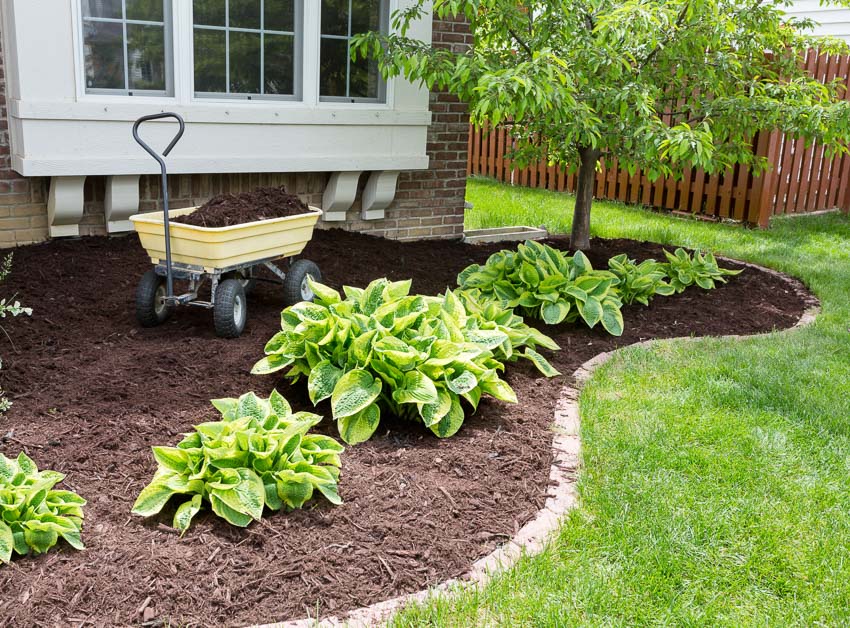The average mulch cost is $35 to $70 per cubic yard, including delivery and installation. Because landscaping mulch is one of the quickest ways to upgrade the aesthetics of your property, it’s a worthwhile investment.
Factors in Calculating Mulch Costs
Explore the various factors that influence the cost of mulch, from the type of mulch you choose to delivery and installation costs.
Type of Mulch
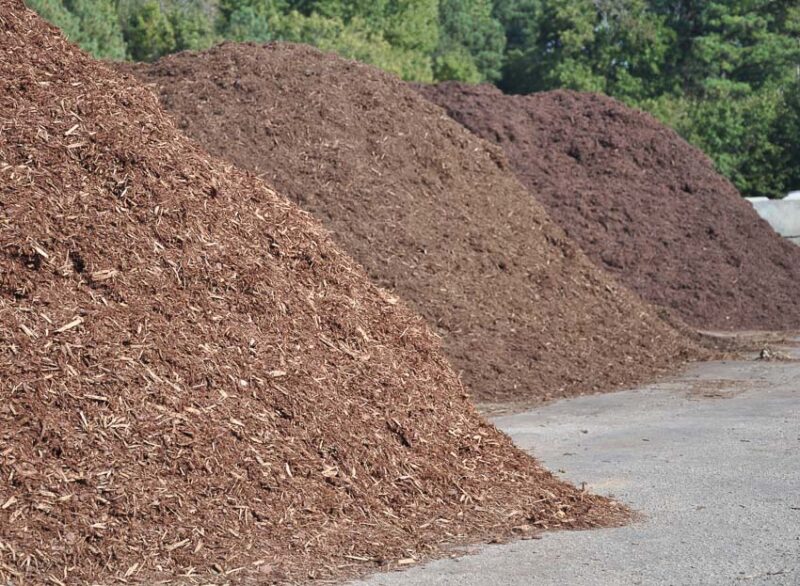
Different types of mulch cost various amounts, and the prices can change depending on where you live.
Organic vs. inorganic
Mulch is either organic or inorganic. Organic mulches, like wood chips, straw, and shredded bark, decompose over time and can benefit your plants by adding nutrients to the soil.
Inorganic mulches like pea gravel, rocks, and geotextiles don’t decompose. They enhance the appearance of your yard and suppress weed growth without adding nutrients to the soil. One advantage is that you don’t have to replace them as frequently.
Organic mulches range in price from inexpensive shredded pine bark, which costs about $28 per yard, to cypress mulch, which costs about $110 per yard. Inorganic mulches cost anywhere from $50 per yard for pea gravel and river rock to $218 per yard for some types of rubber mulch.
Specialty mulches
Specialty mulches like tumbled glass, monochrome rocks, and rubber mulch add color and enhance the aesthetics of your yard. They typically cost more than other mulch types, and you have to special-order some of them.
Source and Availability
The cost of mulch per cubic yard varies greatly depending on where it comes from and how readily available it is in your area.
Local sources vs. imported mulches
If you look for local sources, it’s possible to find bark mulch online for as little as $10 to $25 per cubic yard, depending on where you live. In rural areas with many lumber mills, inexpensive bark mulch is readily available.
Imported mulches, like Mexican beach pebbles, can be extremely expensive. Delivery costs and high demand play a role in the cost of imported mulches.
Seasonal availability
Some types of mulch are only available seasonally, such as straw mulch or shredded leaves. Mulches that don’t decompose as quickly, such as wood mulch or inorganic mulches, are readily available throughout the year.
Delivery and Installation
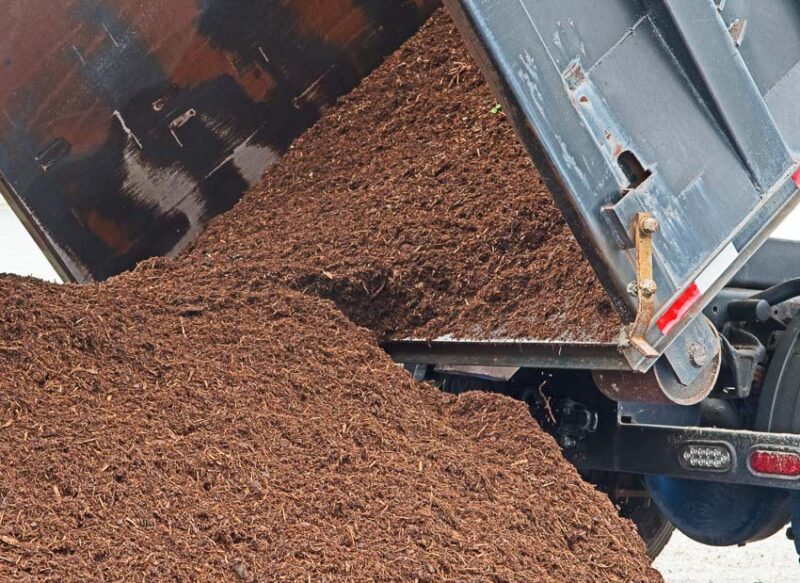
When comparing mulch prices, don’t forget to include delivery costs. If you’re having someone else install the mulch, you should also calculate the installation costs, since some types of mulch cost more to install than others.
Bulk delivery fees
Unless you’re working on a small project, like a flower bed, you may want to consider bulk delivery. It will be more cost-effective than purchasing bagged mulch.
Delivery charges vary depending on the distance, the type of mulch, and the amount of mulch you order. The average cost of delivery for mulch is typically between $45 to $100 per load.
Spreading and laying charges
Some types of mulch are easy to spread, such as straw mulch or shredded bark. On the other hand, river rocks are one of the most difficult types of mulch to install.
On average, you can expect the installation costs to add another $20 to $50 to the cost of mulch per yard.
Additional Costs and Considerations
Explore additional costs and considerations that affect the cost of mulch, including edging, landscape fabric, and maintenance and replacement costs.
Edging and Landscape Fabric
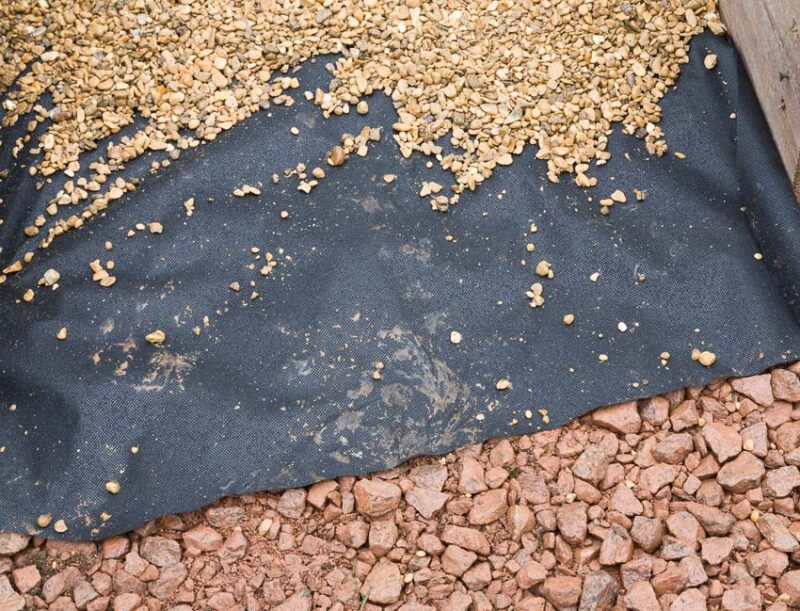
When calculating the overall cost of your mulching project, be sure to include edging and landscape fabric.
Benefits of using landscape fabric
Landscape fabric helps suppress weeds, keeps mulch clean, and prevents mulches from getting swallowed by the dirt. The cost of landscape fabric varies depending on how much you buy, as it costs more per square foot in small quantities.
Different types of edging materials
There are many different types of edging materials, and finding the right combination of edging and mulch can significantly impact the aesthetics of your home’s curb appeal.
Edging materials range in price from $5 to $10 per linear foot. The most common types of edging are metal, cut stone, pressure-treated wood, and concrete.
Maintenance and Replacement
How long does mulch last? That depends on the type of mulch and how it is cared for.
Frequency of mulch replacement
Certain mulches require frequent replacement. Some homeowners replace dyed bark mulch every year because it loses its color, while others are content with leaving bark mulch as is for up to 4 or 5 years.
A number of mulch types decompose quickly, such as shredded leaves, grass clippings, or straw mulch, and it may need to be replaced every year. Long-lasting mulches like rubber mulch last up to 12 years, while river rock mulch can last for decades and only requires occasional top-ups.
Costs of mulch top-ups
The cost of mulch top-ups should be considered when calculating mulch cost. Mulches that stay in place, like river rocks, don’t require frequent top-ups like bark mulch, which is easily displaced during heavy rains and overwatering.
Possible Allergic Reactions
Allergic reactions are another important consideration with various mulches.
Mulches to avoid
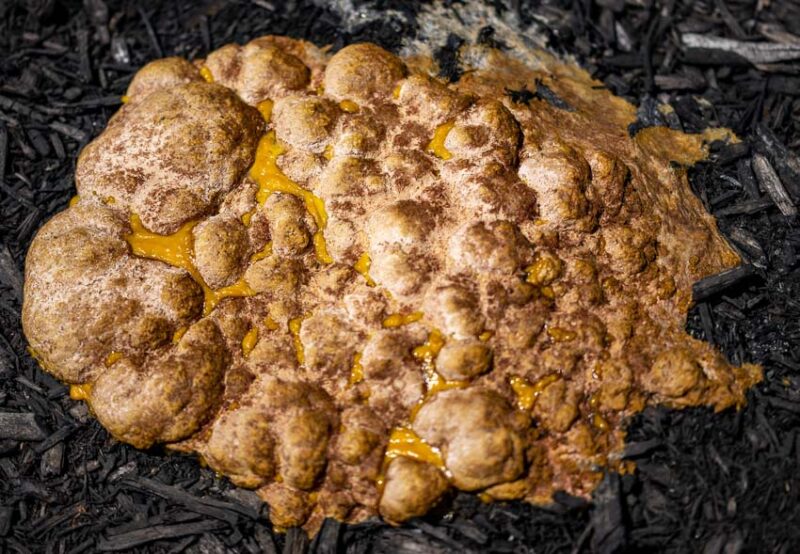
If you or anyone in your family, including pets, are susceptible to allergens, an inorganic people- and pet-friendly landscaping mulch may be the best option. For instance, rubber mulch is resistant to mold and mildew, as are rocks and gravel.
Cedar is the most common mulch that causes allergies, but almost any type of organic mulch can contain allergens caused by mold and mildew . Indeed, allergies to mulch are a common problem, with about 5 to 10% of the population affected.
Allergy symptoms include contact dermatitis that leads to blisters that spread on hands, legs, and arms, and require treatment by a steroid. Other symptoms include watery, itchy eyes, nasal congestion, and a runny nose.
Safe mulching practices
In addition to allergens, mulch can present a few other common problems. Here’s how to stay safe when using mulch:
- Wear gloves when handling mulch.
- Wash your hands well after handling mulch.
- If you’re moving dry, dusty mulch, wear a dust mask.
- Use natural or synthetic insecticides if you have problems with ants, ticks, or termites in your mulch.
Mulch Cost by Yard Size
The more area you have to cover with mulch, the more it costs. It varies depending on the type of mulch you use, but it takes about one cubic yard to cover 108 square feet, 3 inches deep.
Mulch costs about $0.40 to $0.60 per square foot, including installation and delivery. Take a look at the average cost of mulching small, medium, and large yards.
Small Yards (up to 1,000 sq. ft.)
Most yards are covered with lawns, and only about 10 to 25% of the area in your yard requires mulch. The cost to mulch a small yard less than 1,000 square feet (or about 100 to 250 square feet of mulched area) is about $40 to $150.
Medium Yards (1,000 – 5,000 sq. ft.)
The cost to mulch a medium yard that is 1,000 to 5,000 square feet is $40 to $750, depending on how much area you are mulching and the type of mulch you choose.
Large Yards (Over 5,000 sq. ft.)
Large yards over 5,000 square feet can cost $200 to $750 or more, depending on how much area you are mulching.
When Do I Need to Mulch?
Discover the best times to mulch, how often you need to do it, and the benefits of using mulch in your yard.
Benefits of Mulching
There are many benefits of mulching. Aside from the obvious aesthetic benefits, mulch is used to conserve water and suppress weeds.
Organic mulches break down, providing nutrients to microorganisms and plants. Mulch can also prevent soil erosion, which is good for the environment because even small amounts of erosion in your yard can contaminate nearby water sources.
Seasonal Considerations
The best time to mulch depends on where you’re installing mulch and the intended purpose. In vegetable gardens, the best time to mulch is mid to late spring, after seedlings have had a chance to poke their heads out of the ground.
In your yard, you can mulch anytime, but to get the most benefits, it’s best to do it before the hottest part of the summer.
Preparing your yard for mulching
Follow these steps to prepare your yard for mulching:
- Get rid of weeds
- Install the edging
- Level the area to be mulched
- Install landscape fabric
Landscape fabric works as a weed barrier and makes your mulch last longer, but it’s optional. Once the area is prepared, you can spread the mulch about 2 to 3 inches deep.
DIY Mulch Costs vs. Hiring a Professional
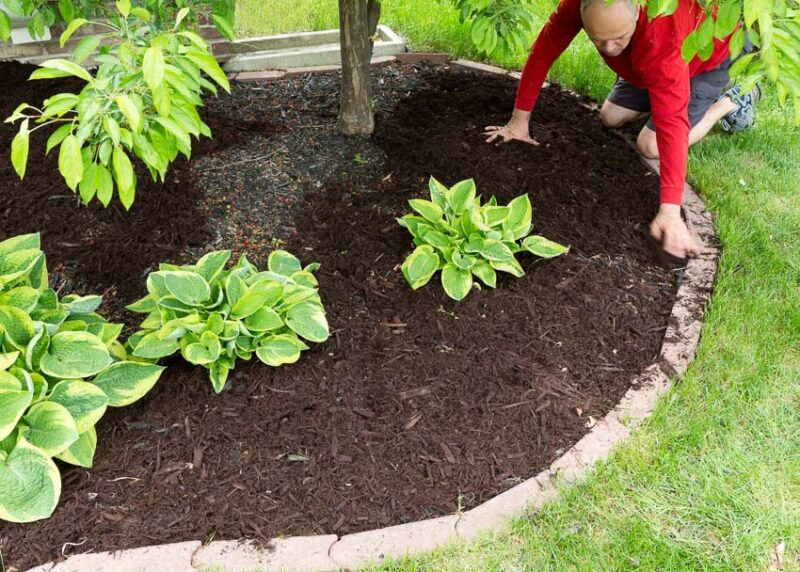
Mulching is DIY-friendly, but it’s hard work. Take a look at the costs of hiring a professional landscaper versus installing mulch yourself.
Costs of Buying and Transporting Mulch for DIY
DIY mulch installation requires a shovel and a wheelbarrow. If you have a pickup truck, you can haul the mulch yourself to save money on delivery.
Pickup vs. delivery
The cost of mulch delivery depends on the location, type of mulch, and how much is being delivered. On average, people pay about $15 to $65 more per cubic yard to have mulch delivered, plus an additional $50 to $100 flat fee for hauling.
If you’re hauling it yourself, factor in your gas, wear and tear on your vehicle, and your time to see if it’s worth having it delivered.
Professional Mulching Services
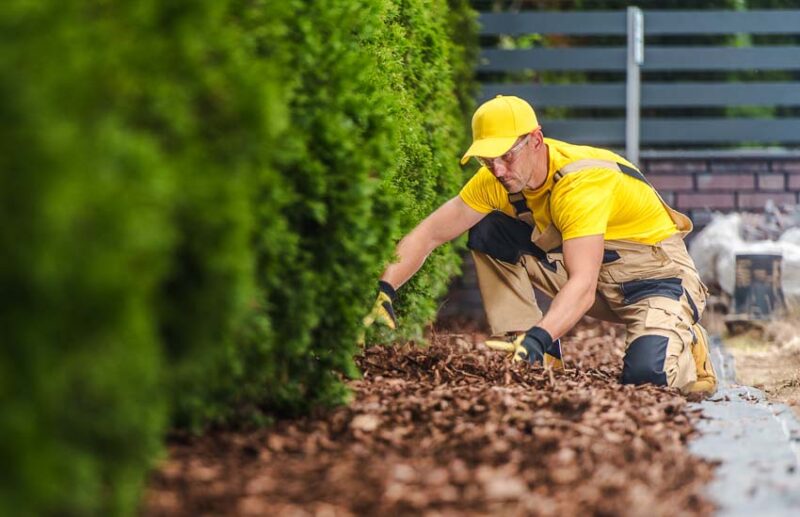
There are several benefits to hiring a professional mulching service. Even though it will cost more, you’ll save time, and you get to enjoy the quality of professional installation.
Professional mulching services use high-quality mulch, which will enhance your home’s curb appeal. The cost of professional mulching depends on the type of mulch, but on average, people spend $30 to $145 per cubic yard. This amount usually covers about 100 square feet, and the price includes delivery and installation.
How to Save Money on Mulch Costs
Mulch can be expensive. Using these money-saving tips can save you hundreds of dollars.
Bulk purchasing–Buy bulk quantities to get a discount. If you don’t need that much, ask your neighbors if they want to split the costs of a load with you.
Seasonal sales and discounts–Sign up for alerts at your local landscape supply company or follow them on Facebook to find special deals like Mother’s Day sales and end-of-season discounts.
Reusing and recycling mulch–You can recycle old wood mulch to make compost. You shouldn’t use it on vegetables if your wood mulch contains toxins, but it will be great for your flowers and shrubs.
Local mulch programs or community mulch days–Look for community mulch days in your region. Many lumber yards offer free mulch days to give back and support their communities.
FAQs About Mulch Costs
How deep should my mulch layer be?
The required depth for mulch depends on the type and how coarse the material is. Some types of mulch only require 1 to 2 inches, while others need 3 to 4 inches to be effective. You can also use too much, which will suffocate plants.
Is dyed mulch more expensive than natural mulch?
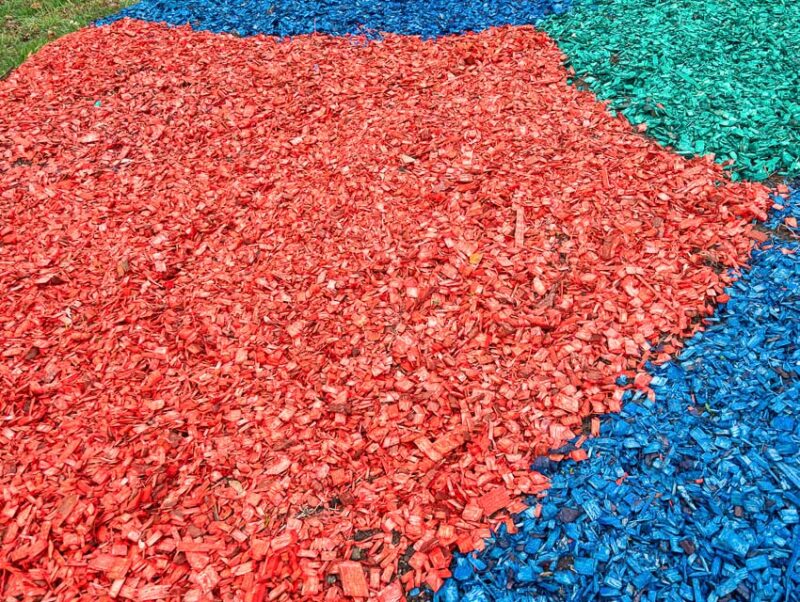
Dyed mulch usually costs more than undyed mulch because it requires more processing. Typically, it is about $5 to $10 more per cubic yard.
How can I estimate the amount of mulch I need?
To calculate how much mulch you need, find the area and multiply it by the depth. Make sure to convert all measurements to feet, and then use this formula to find the cubic yards required:
Length (feet) x width (feet) x depth (feet) divided by 27 = cubic yards
Is rubber mulch a cost-effective option?
Rubber mulch is cost-effective in the long term because, even though it has a higher upfront cost, it lasts about 10 to 12 years without fading or moving.
Does mulch attract pests, and how does it impact the cost?
Some types of mulch attract pests, particularly organic mulches. Inorganic mulches don’t attract as many pests, and rubber mulch will even repel termites. Mulches that attract pests must be treated with insect repellents, which can increase the long-term cost of using them.

